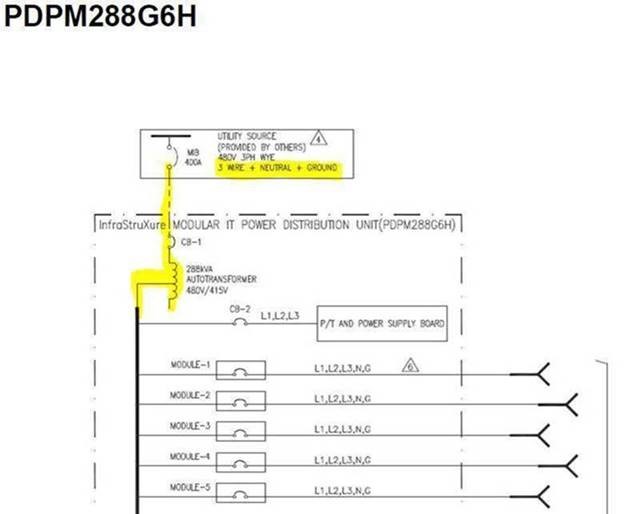Issue:
The installation manual requires a 4-Wire (3 phases + Neutral + PE) for the input and output. This PDU has a transformer in it. Can it be installed as a 3-Wire (3 phases + PE) on the input with the transformer creating a Neutral on the output for the load?
Product line:
Modular PDU
Environment:
All models, all serial numbers
Cause:
Customer requested information since 4-wire wasn’t available in the installation location. The installation manual, one-line diagrams, and the service manual do not provide specification as to why 4-wire is required.

Resolution:
No, this PDU requires 4-wire on the input and output.
The input neutral is required since it is the same neutral used for the output. The Auto Transformer doesn’t have a Star Point to create a the neutral needed by the load.


The installation manual requires a 4-Wire (3 phases + Neutral + PE) for the input and output. This PDU has a transformer in it. Can it be installed as a 3-Wire (3 phases + PE) on the input with the transformer creating a Neutral on the output for the load?
Product line:
Modular PDU
Environment:
All models, all serial numbers
Cause:
Customer requested information since 4-wire wasn’t available in the installation location. The installation manual, one-line diagrams, and the service manual do not provide specification as to why 4-wire is required.
Resolution:
No, this PDU requires 4-wire on the input and output.
The input neutral is required since it is the same neutral used for the output. The Auto Transformer doesn’t have a Star Point to create a the neutral needed by the load.
Released for: Schneider Electric Philippines



